arboretum magazine

Spring blooms celebrate 50 years of the historic Snyder Building
APRIL/MAY 2024



FROM THE EXECUTIVE DIRECTOR
ANDREW GAPINSKI
In April, signs of spring appear across the landscape at the Arboretum, slowly transforming the gardens and grounds until a vibrant tapestry of color bursts onto the scene in May.
A highlight is our tulip displays, which feature 40,000 bulbs in a staggering 135 varieties that illuminate the gardens with a much-needed dose of color. The planning and planting of the tulip displays happen in the summer and fall of the previous year, and it’s incredible to see the hard work of horticulture staff and volunteers come to fruition as thousands of tulips begin their spring show.
This year’s tulip displays feature a gold theme in the gardens surrounding the Leon C. Snyder Building as the Arboretum celebrates the 50th anniversary of the opening of the building which served as the first visitor center. Learn more about this year’s horticulture theme and what you’ll see out on the grounds this spring on page 4.
APRIL/MAY 2024, VOL. 43, N O 2
Spring blooms such as tulips, crabapples and lilacs are iconic to the Arboretum and represent the horticultural heritage and innovation that sets us apart.
As we announced this winter to members, to continue to invest in our community; our gardens, collections and natural resources; and research and programming for generations to come — and to provide the best experience at the Arboretum — we’re making changes to memberships, daily gate admission and advanced reservation requirements, effective April 1.
With these changes, we’re excited to offer new benefits and easier ways to access the Arboretum, including the ability for all members to visit Tuesdays, Wednesdays and Thursdays without a ticket. We are also keeping important benefits such as free parking and free admission for ages 15 and younger.
The Arboretum must raise 93% of its annual operating budget through philanthropy, sales and investments. Your continuing support helps us achieve that goal and makes it possible for the Arboretum to invest in staff and infrastructure; meet the needs of our visitors, our growing gardens and plant collections; and maintain our buildings and grounds.
the that sets continue to and and
For more information on these changes, visit arb.umn.edu/ 2024members. Thank you for your support of the Arboretum!
Minnesota Landscape Arboretum Magazine is published six times a year by the Minnesota Landscape Arboretum. The Arboretum is part of the College of Food, Agricultural and Natural Resource Sciences (CFANS) at the University of Minnesota. The magazine is a benefit of Arboretum membership. To request a copy of this publication in an alternate or digital format, please call 612-301-1257.
© 2024 Regents of the University of Minnesota. All rights reserved. The University of Minnesota is an equal opportunity educator and employer.
Elise Bremer, Editor
Brenda Drake Lesch, Art Director
Andrew Gapinski, Executive Director
Matthew Clark, Ph.D., Director of Research
Timothy S. Kenny, Director of Education
David Senior, Director of Business & Finance
Susan Taylor, Ph.D., Director of Advancement
Tom Lany, Marketing, Communications & PR Manager
Glenn Stolar, President, Arboretum Foundation arb.umn.edu 612-624-2200 arbinfo@umn.edu
| ARBORETUM MAGAZINE // APRIL • MAY 2024 2
Photo by Jason Boudreau-Landis
On
the cover and
above: In the spring, thousands of tulips delight visitors of the Arboretum. Cover photo by Don Olson
HISTORY
LILY SMITH • SOCIAL MEDIA COORDINATOR

In 2024, anyone with a smartphone can quickly snap a picture and freeze the moment forever at the Arboretum. Whether photographing tulips in their spring glory or a hummingbird in summer flight, visitors can post the photo for the world to see within seconds. Fifty years ago, at the grand opening of the Leon C. Snyder Building, this technology was far from our fingertips. Photos needed to go to a lab for developing. Phones were tied to the walls — with boxes and cords!
This year the Arboretum is looking back to the 1974 grand opening of the Snyder Building, which was designed by architect Edwin Lundie in the style of a European country manor. Named after the Arboretum’s first Director, Leon C. Snyder, the building served as the Arboretum's first visitor center and education and research headquarters.
It also included a smaller version of the Andersen Horticultural Library and a small restaurant known as the Tea Room. Over the years, the Snyder Building has hosted more than 500 weddings and countless other special events.
With its richly hued woods and warm terra-cotta tile flooring, the Snyder Building is a special, inviting place. Many members and staff have witnessed firsthand the jaw-dropping growth of the Arboretum that the Snyder Building helped launch, including a new era of expanding programming and land acquisitions in the coming decades.
“I am celebrating my 43rd work anniversary at the Arboretum this spring,” said Susie Koepp, Operations Supervisor and one of the Arboretum’s longest-serving employees, “I am inspired by and grateful to this beautiful place. Throughout my years, the improvements and upgrades to our equipment, facilities and gardens have been the most rewarding to see.”
As we reflect on the past, the Arboretum is buzzing with excitement for its next chapter. The celebration of this historic occasion and the growth of the Arboretum as a whole has been made possible only with the commitment of dedicated members, volunteers and staff.
This spring, look for a horticultural celebration of the Snyder’s 50 years in the gold-inspired tulip plantings around the Snyder Building. And, the next time you reach for your phone to snap a picture at the Arboretum, take a minute to appreciate the deep history of this place — and then share it with the world!


Photos courtesy of the Andersen Horticultural Library
ARBORETUM MAGAZINE // APRIL • MAY 2024 | 3
Photos of the Snyder Building in the 1970s show a familiar scene, with some noticeable differences!
SEASONAL HIGHLIGHTS
Honoring 50 years of horticultural history — in tulips
ELISE BREMER • EDITOR
If you’ve celebrated a 50th wedding anniversary or sent flowers to a special couple in your life marking such an occasion, you might know that the 50th anniversary is traditionally celebrated as the “golden anniversary.” While gilded accessories are the traditional 50th-anniversary gift, some celebrations simply call for flowers — and lots of them.
In 1974, the Snyder Building, which served as the Arboretum’s first visitor center, opened its doors, and this year is marking 50 years as the home of so much horticultural heritage. To celebrate, the Arboretum’s horticulture staff have planned a fitting floral tribute, and this spring, thousands of cheerful tulips in varying shades of gold, yellow and orange will dazzle visitors in the gardens surrounding the Snyder Building.
Horticulturist Duane Otto has planned the spring tulip displays at the Arboretum for the past 35 years and relishes the opportunity to peruse catalogs for new and exciting bulb varieties that will surprise and delight visitors. “As time goes by, the tulips keep getting more fancy, more fringed, more frilly,” said Otto. “It’s so exciting to have those new varieties — because when I was a kid we just had the single tulips. Now we have parrot tulips,
double tulips, and now even the double tulips are fringed, too.”
For this year’s displays, Otto hand selected tulips in an astonishing variety of shapes, forms and heights, creating a custom “Golden Anniversary Mix” to welcome visitors to the Snyder Building. Surrounding the white flowering crabapple at the entrance to the building, a blend of single, double and parrottype tulips — named for their elaborate and feathery petals — promises to create a brilliant golden tapestry.
Classic single-type tulips such as the buttery yellow ‘Sunny Prince’ will blend harmoniously with fancier neighbors, including the frilly ‘Yellow Pomponette’ and exquisite ‘Yellow Madonna’, a favorite variety of Otto’s featuring a delicate flume of green that illuminates its delicately curved yellow petals.
Along the sidewalk that leads visitors to the Snyder Building, Otto crafted a custom “Golden Anniversary Double Mix” with a blend of eye-catching double tulips in yellow and gold hues accented by an occasional pop of orange. Double tulip varieties are packed with petals, lending their flowers the appearance of a petite peony.

| ARBORETUM MAGAZINE // APRIL • MAY 2024 4
Classic single-style tulips such as 'Sunny Prince' are a staple of Duane Otto’s designs, complementing showier double and parrot tulips in the displays.
SEASONAL HIGHLIGHTS
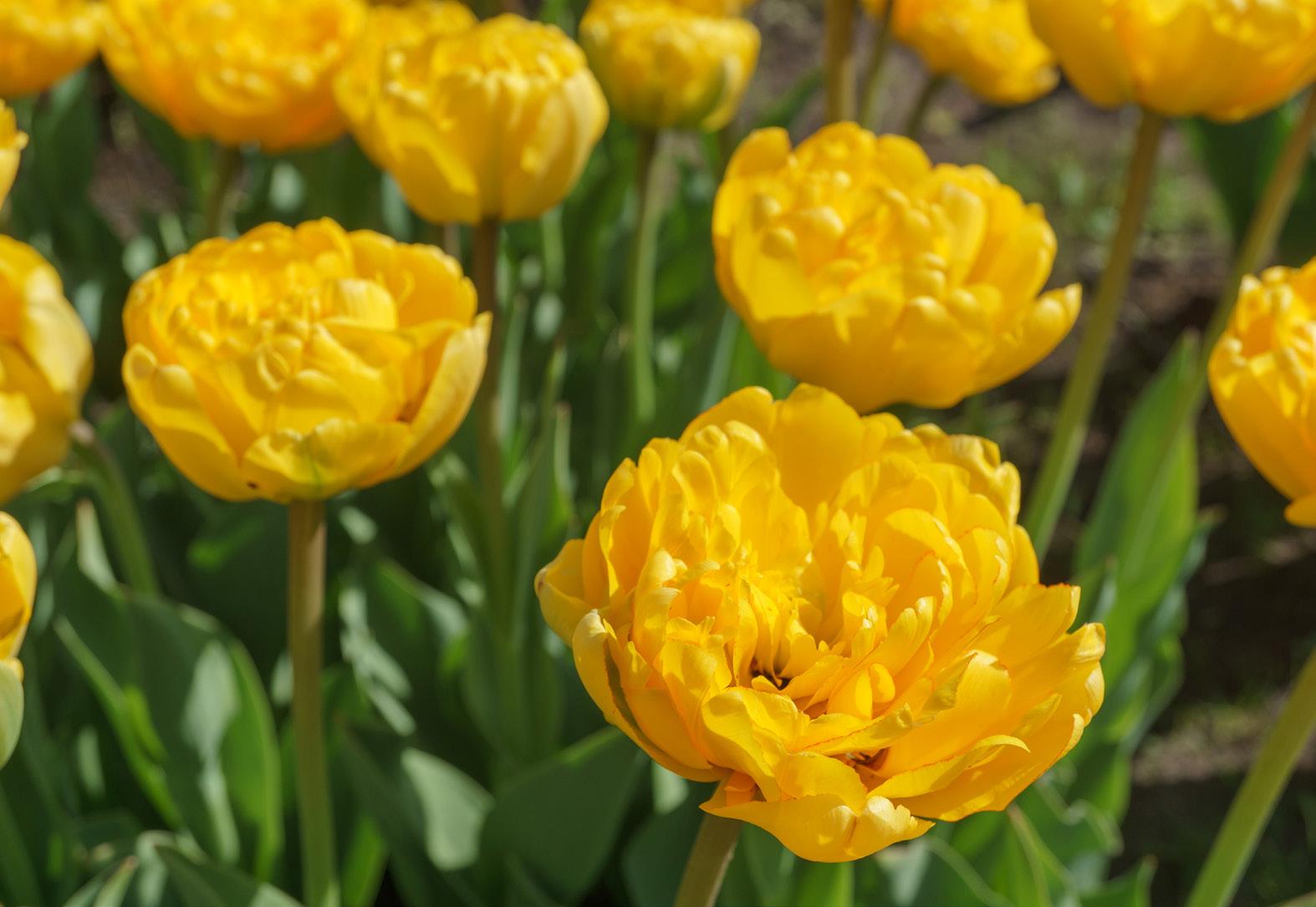
In the Annual Garden, home to 20,000 tulips each year, visitors will find a lush mix of reds and pinks with only touches of gold. This is a characteristically carefully considered design choice by Otto to reserve a sea of gold blooms to lap at the edges of the Snyder Building: “It’s more special to have the theme of gold around the Snyder Building to emphasize the significance of the anniversary,” he said.
Otto completed his initial designs in early August before placing orders with wholesalers, who import the tulip bulbs from the Netherlands. Once the bulbs are received in late September, Otto and a crew of staff and volunteers sort the bulbs by garden and bed before planting them in mid-October.
In addition to selecting tulip varieties for each bed based on complementary colors, shapes and forms, Otto selects tulips for their bloom time. By choosing a variety of early, mid- and late-blooming varieties for each design, Otto creates a carefully orchestrated parade of blooms that results in an ever-changing tulip display.
Bloom time is based on the height of each tulip variety. The taller the tulip, the longer before the blooms unfurl on top of the lofty stems. In the Annual Garden, Oswald Visitor Center and Highway 5 entrance beds, shades and tints of red will intermingle with the year’s signature yellow and gold flowers. One of Otto’s favorite red tulip varieties is ‘Miranda’, a mid- to late-season tulip that soars to about 18 inches. Otto cautions that the grand height of this vivid bloom requires a certain amount of TLC on the part of horticulture staff.
“‘Miranda’ is tall and beautiful, and her flowers are big. But when it rains she tips over, so we have to go shake the flowers to prevent the stems from bending,” Otto said.
The tulips typically begin to bloom at the Arboretum in April or May and can be found throughout the Arboretum’s gardens, including the Home Demonstration Gardens. Visit arb.umn.edu/gardenhighlights every Thursday for updates on what’s in bloom this spring, including daffodils, magnolias, lilacs and crabapples as they come into season.
In the fall, Arboretum staff and volunteers plant thousands of tulip bulbs that emerge in the spring, creating a rich tapestry of color and texture. Double tulips, such as 'Yellow Pomponette' (left), are packed with petals, lending the flower heads a frilly, pom-pom look.

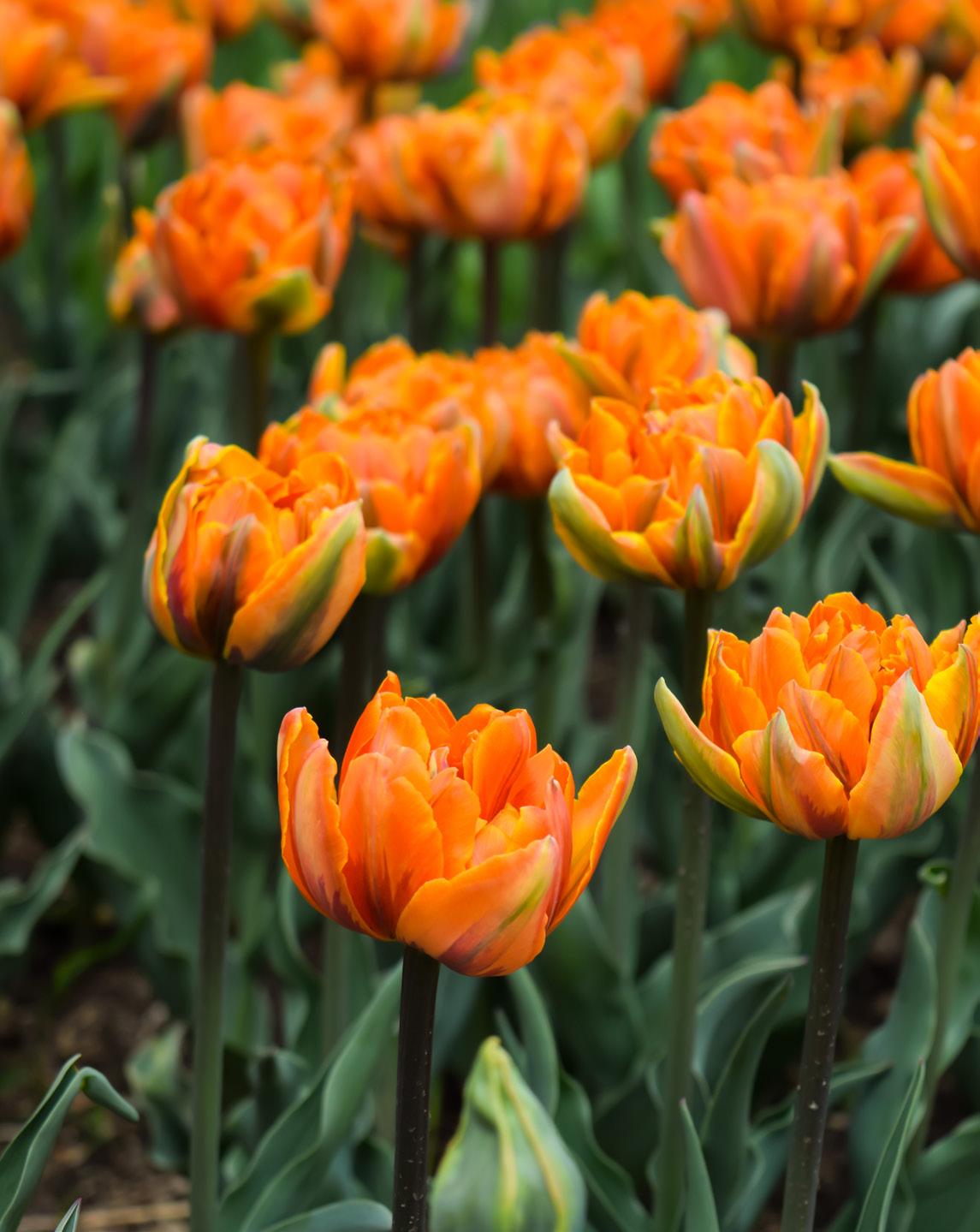
ARBORETUM MAGAZINE // APRIL • MAY 2024 | 5
Orange tulips such as 'Orange Princess' add a subtle golden glow to predominantly yellow displays.
Photo by Richard Van Aernum
HORTICULTURE
JULIE WEISENHORN • UNIVERSITY OF MINNESOTA EXTENSION HORTICULTURE EDUCATOR
My favorite phone app is the one that I use for making lists: groceries, books, meal plans, and, of course, plants. My plant list contains plants for work, plants for home, plants I read about and plants I learn about from friends. For example, my in-process plant list for the 2024 Foodscape garden here at the Farm at the Arb includes sorrel, giant Marconi peppers, wild bergamot (Monarda fistulosa), violas and garden sage. As we prepare for the growing season ahead, remember that success in the garden begins with choosing the right plant for the growing conditions in your garden.
Right plant, right place
A beautiful, healthy plant is one grown in the right soil, with the right amount of light and with enough space to reach its natural form and size. Selecting plants with growing needs that match your site and landscape conditions will:
• Improve plant appearance, performance, health and overall longevity;
• Reduce plant stress and increase resiliency;
• Require fewer plant inputs such as water, fertilizer, pesticides and maintenance;
• And increase plant recovery success from extreme weather and pest damage.
Locating plants in unsuitable conditions also increases plant stress, which makes them more susceptible to — and less likely to recover from — disease, pest damage, wildlife browsing and extreme weather, such as drought. Putting a shade-loving hosta that thrives in rich organic soil instead into full sun and sandy soil will reduce the plant’s vigor as it tries to survive in unsuitable growing conditions over time.
While it can be easy to succumb to the visual aesthetics of a plant at the garden center and end up taking it home on a whim, it’s important to make sure the plant will grow well in your landscape. Be sure to cross-reference information on the plant label with your site conditions and be realistic for the sake of the plant, your time and your wallet.
Plant selection tools and resources
Learn more about finding the right plant for the right place at arb.umn.edu/ learn/athome-gardening and discover helpful resources from University of Minnesota Extension horticulture experts. To view a wide variety of horticultural resources, books, magazines and journals in person, stop into the Arboretum's Andersen Horticultural Library on your next visit. Interested in adding a certain plant to your garden? Use the Arboretum’s Plant Finder tool to check out established plants in the Arboretum’s gardens and be sure to shop the Arboretum’s Plant Sale May 10-11.

| ARBORETUM MAGAZINE // APRIL • MAY 2024 6
The Arboretum’s Perennial Garden features sun-loving plants such as this golden-yellow yarrow (Achillea millefolium), which would struggle to cope in a shadier environment such as the Hosta Glade.
Photo by Mark MacLennan
 MATT SCHUTH • NATURALIST
MATT SCHUTH • NATURALIST
With the arrival of spring, the stillness of the frozen woods and the fluffy snowflakes that floated to the ground with a whispered softness are soon forgotten. With lengthening daylight and warming temperatures, ephemeral flowers fill the forest floor with a rainbow of colors while the forest canopy displays many shades of green. At secluded ponds surrounded by woodland, much like the Arboretum’s Wood Duck Pond, signs of life begin to appear.
Along the pond’s edge, a female wood duck inspects a nesting box to see if it meets her expectations for a future family. Her male suitor, decked out in his gaudy courting colors, watches from the water. His glossy green head and colorful body make him appear as if he has been splattered
by the palette of an abstract artist.
In the water, a group of great egrets stands stoically like marble statues. Their delicate white plumes (called aigrettes) were once used to decorate hats in the early 20th century, and the demand nearly drove them to extinction. Fortunately, conservation efforts have saved this species.
The smooth surface of the pond slightly shimmers as common water striders scoot over the water with zigzag herky-jerky movements, held aloft by fine hairs on their long legs. A muskrat glides silently through the water and climbs up on its lodge of cattails and sedges to munch contentedly on a meal of bulrush roots.
The quiet of the pond is disturbed by the snorting guttural grunts of the northern
leopard frog as his loud mating calls resonate across the water. At the peak of the breeding season, males will try to mate with nearly anything floating in the water, including other males and mislaid beer cans. This mating behavior is called “amplexus” which means “embracing” in Latin.
The annual sights and sounds of a woodland pond in springtime provide us with a wonderful opportunity to escape the stress and clatter of everyday life. The Arboretum has numerous woodland ponds and natural areas to explore including Green Heron Pond, Wood Duck Pond and Spring Peeper Meadow. Visit arb.umn.edu/walkstrails for a complete list of trails and maps to plan your next visit to the Arboretum to experience nature in all of its springtime glory.
ARBORETUM MAGAZINE // APRIL • MAY 2024 | 7
NATURE FOCUS
Photo by Nature by Travis Bonovsky
A pair of wood ducks — the namesake for the Arboretum’s own secluded Wood Duck Pond — glide across the open water in spring.
ALYSSA HEADLEY • GRADUATE RESEARCH ASSISTANT, DEPARTMENT OF HORTICULTURAL SCIENCE BRANDON MILLER • ASSISTANT PROFESSOR, DEPARTMENT OF HORTICULTURAL SCIENCE AND CURATOR OF PLANT COLLECTIONS, UNIVERSITY OF MINNESOTA LANDSCAPE ARBORETUM
Toward the back of the Arboretum’s Miscellaneous Shrub Collection along ThreeMile Drive, the careful observer may notice two unusual plants characterized by their strong upright form, dusty white bark and emerald-green foliage, which lends them an arid, desert-like quality. These unique shrubs don’t resemble any other deciduous landscape staple from the Midwest, and they stand out distinctly among their neighbors.
This unique plant is commonly known as New Mexico privet or desert olive (Forestiera pubescens, formerly F. neomexicana). Native to the southwestern part of the U.S., New Mexico privet grows at high elevations atop rocky mesas, usually
at the edge of seasonally dry water sources.
The Arboretum’s plants were received in 2005 through a USDA trial program that set out to learn how this species would perform in landscape settings across the North Central U.S. At almost 20 years old, these plants appear to be thriving in the Arboretum’s Zone 4b in average Midwest soil without any winter damage. Based on comments from our colleagues out West, they are also purportedly adaptable to extreme soil moisture conditions, tolerating both wet and dry conditions.
Considering their adaptability, reliable performance and attractive ornamental features, New Mexico privet could make an excellent

landscape specimen or hedge plant in Midwest gardens and landscapes. This made us wonder, how easily could these plants be propagated and grown in a commercial setting?
We found little to no research information in the published literature, so we conducted an experiment to learn if the commercial version of what home gardeners know as “rooting hormone” could be used to elicit roots on stem cuttings taken in the summer months. To our delight, we found the cuttings very easy to root! Our next steps are to determine the best conditions for culturing them in the nursery and with a bit more work, you may soon find New Mexico privet in a garden center near you.

| ARBORETUM MAGAZINE // APRIL • MAY 2024 8 RESEARCH
The pale bark, vibrant green foliage and upright form of the New Mexico privet makes this unique plant stand out among its neighbors at the Arboretum.
Photos by Brandon Miller
 JEFF ISEMINGER • CONTRIBUTING WRITER
JEFF ISEMINGER • CONTRIBUTING WRITER
If your mother loved to garden with joie de vivre, if she gracefully shared that love with young people, if she reveled in the outdoors as a second home, well, you might decide — understandably — to honor her legacy through the Minnesota Landscape Arboretum.
This is exactly what Mary Jenson and Kitty Petit have done for their mother, Renata (Ronnie) Winsor, who died in 2019 at age 98.
“Mom loved working in her gardens and being outside,” said Jenson, who herself ran a garden design business for 30 years in three cities. “She poured herself into tending her gardens,” said Petit, who had a career in libraries and bookstores, “and she never hired a professional gardener.”
Mondays seemed to have meaning for Winsor. That’s when she sent a homegrown bouquet every week with her husband, John Winsor, on his way to work. And that’s the day she had a high school student help her in the gardens and, as a bonus, be mentored in the glories of gardening.
Winsor was very active in the Lake Minnetonka Garden Club and served as a bridge between the club and the Arboretum.
She was known as the “Tulip Lady” at the Arboretum, where she underwrote the cost of the annual tulip display for years.
“When Mom moved out of her home to a condominium,” said Petit, “she still planted lots of pots on her balcony. She proceeded to come every Monday to help me convert my own shade garden from invasive buckthorn to native plants!”
After their mother’s death, Petit and Jenson asked the Arboretum staff how they could honor their mother. Their decision: Devote some of her estate to the annual fund and the Farm at the Arb Apprenticeship Program, which offers training in market gardening.
Jenson is familiar with a similar program at the Denver Botanic Gardens, where she’s a volunteer. “There’s been a resurgence of interest among young people in sustainable and regenerative agriculture, which is important to the planet,” said Jenson.
In broader planetary terms, both sisters said their mom would be pleased to see how they’re helping the Arboretum do this in her name: Show how the warp and woof of nature includes us.
ARBORETUM MAGAZINE // APRIL • MAY 2024 | 9
THE JOY OF GIVING
Renata Winsor (center) instilled a love of gardening in her daughters Mary Jenson (left) and Kitty Petit (right), who are now sharing that gift with future generations of growers and gardeners at the Arboretum through a gift from their mother’s estate.
Photo by Jennie Sewell
EVENTS
Find a new way to explore the Arboretum in each season. In addition to 1,200 acres of gardens, plant collections and natural areas, the Arboretum offers a variety of events and activities to enrich your experience and deepen your connection with nature. Events are included with daily admission except where noted. Browse the full schedule of events online at arb.umn.edu/events

BUD BREAK RUN, WALK, 5K
May 5, 7:30-11:30 a.m.
Welcome spring with a gorgeous 5K run/walk through the Arboretum as spring splendor unfolds across the grounds. Racers will arrive at the Farm at the Arb, where the races start and end. The Kids 1K loops around the event lawns near the historic Red Barn, allowing for a great area to cheer on the little racers. Registration costs are $15 for the kids race; $35-$40 for members; and $50-$55 for non-members. All racers receive a coupon for $5 off of a $25 purchase at the Gift & Garden Store, good on race day. Plus, top finishers win prizes provided by the Lakes Running Company. Register by April 12 for a guaranteed race shirt in your preferred size online.
STORYTIME
Head to the Andersen Horticultural Library every Thursday and the last Friday of each month for StoryTime. We’ll celebrate plants and nature and foster a love for books and reading as we explore the library's vast catalog of children’s books. StoryTime is included with daily ticketed admission and is recommended for ages 0-5 with a parent, but all are welcome.
FULL PINK MOON HIKE
April 23, 7:30-10 p.m.
Experience the Arboretum after dark during this self-guided 0.75-mile hike around Green Heron Pond, which will be dramatically lit with pink uplights to celebrate the Full Pink Moon. April’s full moon is named for the pink moss phlox that begins to bloom in April in other parts of the country — though moss phlox typically blooms in May in Minnesota. Advance registration required.
DOUBLE DISCOUNT DAYS
April 12-26, 9 a.m.-6 p.m.
Spring has arrived at the Gift & Garden Store with gifts for gardeners, Mother’s Day, graduations and Father’s Day. And Arboretum members qualify for a 20% discount on all regularly priced merchandise — double the usual member discount — when they show their membership card at the register.

YOGA IN THE GARDENS
Practice mindfulness and connect with nature this spring with the Arboretum’s Yoga in the Gardens series. Held on Thursdays and Sundays, yoga classes include nia, slow flow, vinyasa, yin yoga and sound healing and more. Registration is $7.50 for members and $22.50 for non-members. Find the full schedule and reserve your tickets (required) online.
KIDS YOGA
April 7, 11:15 a.m.-12:15 p.m.
New for 2024, Kids Yoga classes are designed to nurture the mind, body and spirit of your children! Each dynamic and fun-filled session incorporates a blend of breathwork, meditation, movement, rest, games and laughter, all while exploring the wonderful world of yoga. Advance registration required.
| ARBORETUM MAGAZINE // APRIL • MAY 2024 10
Photo by Jason Boudreau-Landis
Photo by L. Hughes-Seamans
EVENTS

MAY MARKETS
April 27-May 26, 10 a.m.-4 p.m.
Soak up spring in the Arboretum’s gardens while shopping from up to 65 local artists and artisans during most weekends in May. Check out your favorite makers from past years and discover new ones. Markets will be open (rain or shine) April 27-28, May 4-5, 18-19 and 25-26. This event is included with daily ticketed admission, but space is limited; reserve tickets online to save your spot.
KNIT AND STITCH
Get to work on your next knitting, crocheting or handiwork project with members of the Arboretum Auxiliary! This gathering — held on alternate Wednesdays and Fridays through May — is open to the public and is included with gate admission. View the full schedule online.

ARBORETUM PLANT SALE
May 10-11, 8 a.m.-3 p.m.
Shop for plants selected by Minnesota Landscape Arboretum horticultural experts at this annual sale featuring a fabulous selection of annuals, perennials, fruits, vegetables, herbs, Minnesota natives and trees. Ticket holders will enter at the Farm at the Arb. New features this year include Zone 5 plants for the “Adventurous Gardener;” plants for rock gardens; an expanded selection of U of M introductions; peonies from multiple vendors; a new Minnesota grower of hardy mums; and sales dates on Friday/Saturday instead of Saturday/Sunday. Admission is free, but shoppers need to make a reservation online.
QUILT RAFFLE
May 11-Oct. 5
The 2024 Arboretum Auxiliary fundraising quilt is titled “Minnesota Watercolor” and showcases nature scenes in a soft color palette. Look for this artistic creation on display in the Oswald Visitor Center starting May 11 and purchase a raffle ticket for $2 for a chance to win this handcrafted quilt. A drawing will be held Oct. 5 as part of the Auxiliary’s annual Harvest Sale.
DISCOVERY BOOTHS
May 2-Oct. 27
Learn something new on your next visit to the Arboretum! Discovery Booths feature family-friendly drop-in learning opportunities to spark curiosity and inspire an appreciation of nature. Available from 10 a.m.-1 p.m. on Thursdays and Sundays, Discovery Booth activities are included with daily ticketed admission. Learn more and view monthly themed activities online.
ARBOR DAY
April 26

What better way to celebrate the national holiday that honors the planting, upkeep and preservation of trees than among the Arboretum’s tree collections? Learn about trees from Arboretum horticulture staff, and stop by the Andersen Horticultural Library for a tree-themed StoryTime before taking home a tree sapling to plant in your yard. View the full schedule of Arbor Day activities online.
PRIVATE GARDEN TOUR
Save the date for the 39th annual Private Garden Tour hosted by the Arboretum Auxiliary. Starting at the Arboretum, visitors will tour four local private gardens — each with its own history and charm. Guests will be inspired by creative color combinations, pollinator-friendly plantings, interesting water features and beautiful art pieces. Tours will be followed by brunch, hors d'oeuvres or lunch. Dates are Sunday, July 14 (daytime or sunset); Monday, July 15; and Tuesday, July 16. A portion of the fee is a tax-deductible contribution to the Arboretum Auxiliary. Tickets go on sale April 24. Advance registration is required.

ARBORETUM MAGAZINE // APRIL • MAY 2024 | 11
Photo by Liz Potasek
Photo by Phil Zumsteg
Photo by Katie Knapp
The Gala in the Gardens is back this summer in its signature location among the flowers and foliage of the main gardens at the Arboretum. The Gala — the Arboretum’s annual fundraising event hosted by the Arboretum Foundation’s Board of Trustees — will be held on Thursday, June 13, and celebrates the connection between art and nature at the Arboretum and the incredible staff and volunteers who make it all possible.
Designed to delight the senses on a summer evening, this event includes a reception, dinner al fresco catered by D’Amico, silent and live auctions and an inspiring program led by emcee Belinda Jensen, KARE 11’s Chief Meteorologist.
Art is an integral part of what makes the experience at the Arboretum so special for visitors, with the nature-inspired art pieces found throughout the gardens and galleries serving to deepen visitors’ connection to nature. The Arboretum’s gardens are living works of art, exhibiting an everchanging living museum of botanical wonders.
This year, the Gala’s Fund-A-Need will support current and future art initiatives throughout the Arboretum, including engaging gallery exhibitions, outdoor sculptures and garden design, interpretive and experiential art and educational installations that explore and celebrate communities and perspectives from across our region.
In addition to this special Fund-A-Need effort, general funds raised at the Gala are invested into the Arboretum’s 1,200 acres of gardens, plant and
Executive Director Andrew Gapinski and emcee Belinda Jensen share the stage at the 2023 Gala in the Gardens.

tree collections, facilities and more than 12 miles of walkways and trails. This generous support propels the Arboretum’s mission to welcome, inform and inspire more than 600,000 visitors a year through outstanding displays, protected natural areas, horticultural research and education.
GOLD SPONSORS:
Garden Travel Tours

Register and find the latest Gala details at arb.umn.edu/events/2024gala. Call 612625-9437 or email arbgala@umn.edu with questions. We extend a special thanks to our 2024 Gala Committee co-chairs, Alene G. Sussman and Linda Cutler.
Discover the Botanical Beauty of Western Canada Aug. 7-14
Join the Arboretum's Director of Advancement, Susan Taylor, on a seven-day tour of the beautiful cities of Vancouver and Victoria in British Columbia. Travelers will begin their trip in Vancouver for three days of exploring majestic parks before heading to the charming town of Victoria for historical tours, whale-watching and a visit to the world-famous Butchart Gardens.
Trip Highlights
Vancouver Island
Whale-watching Tour
The Butchart Gardens
VanDusen Botanical Garden
Bloedel Conservatory
High Tea at the Fairmont Empress
| ARBORETUM MAGAZINE // APRIL • MAY 2024 12
NEWS
JE NN Y VER NE R
Photo by Sarah Bednarek
Photo by Jason Boudreau-Landis
The Arboretum is a wonderful place to learn, thanks to a variety of experts, scenery and plant collections. Prices listed are for members/non-members respectively. See a complete list of classes for adults, children and families at arb.umn.edu/learn. Advance registration is required; follow the class links to register or call 612-301-1210.
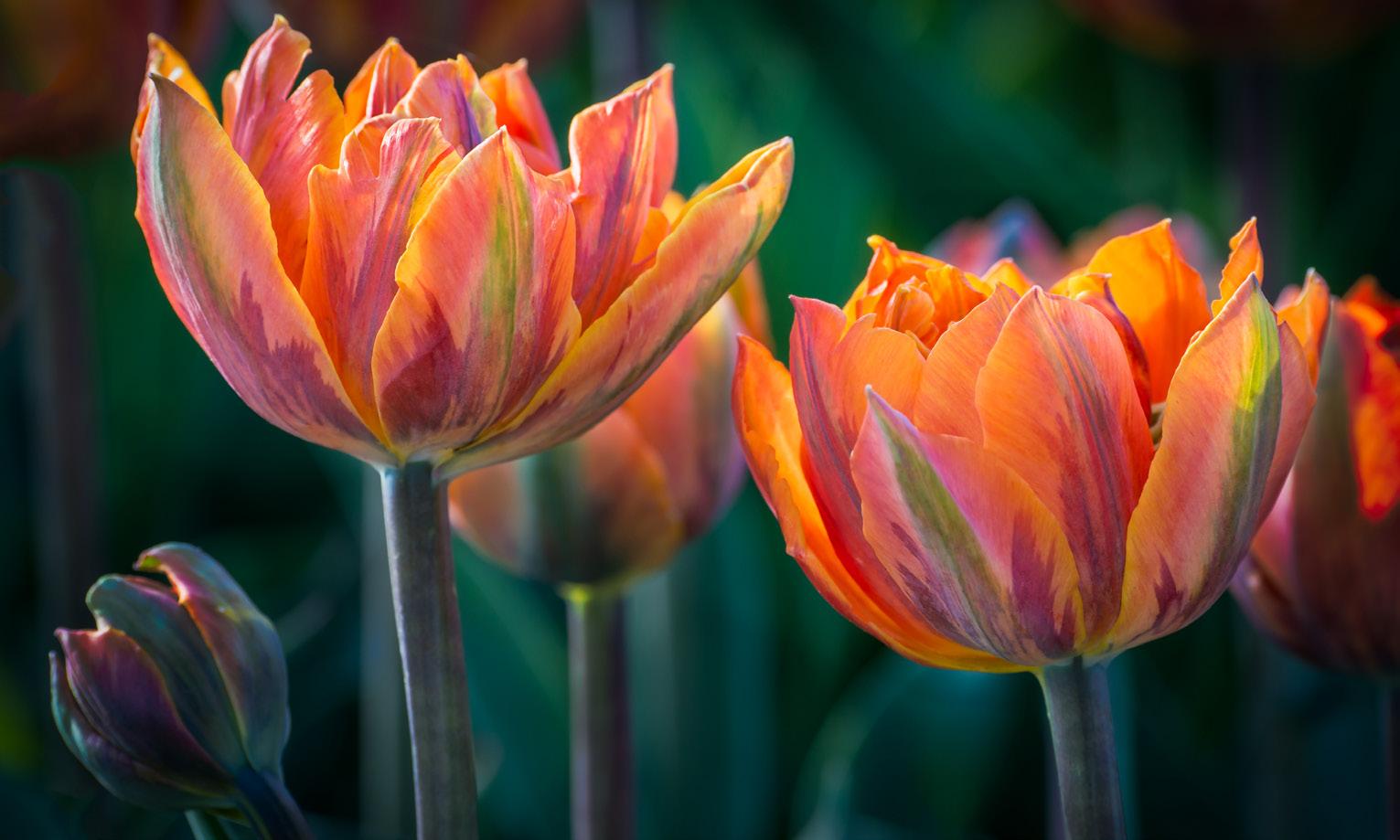
PHOTOGRAPHING SPRING BULBS WEBINAR (ONLINE AND IN-PERSON)
Webinar May 2, 6:30-8 p.m., In-Person Practicum May 4, 8-10 a.m.
Learn to make the most of your equipment and the available light when photographing spring bulbs. Discuss the five types of flower photography and how to manage depth of field, and learn helpful tips for making a great floral image. Register for the online webinar only, or for the webinar and in-person practicum.

Shinrin-yoku
April 5, 10 a.m.-noon, April 26, 4:30-6:30 p.m. and May 10, 8:30-10:30 a.m.
This Japanese mindfulness practice (translated as “forest bathing”) invites nature to be your healer. Guided awareness exercises will help awaken your senses and calm your mind.
Drawing in
Colored Pencil: Swans
April 6, 9:30 a.m.-12:30 p.m. or 1:30-4:30 p.m.
Learn to develop fundamental drawing skills, including observation of shape, line weight, color, layering and blending techniques, as well as shading, composition and perspective, while creating a colored pencil drawing of swans. All supplies are included.
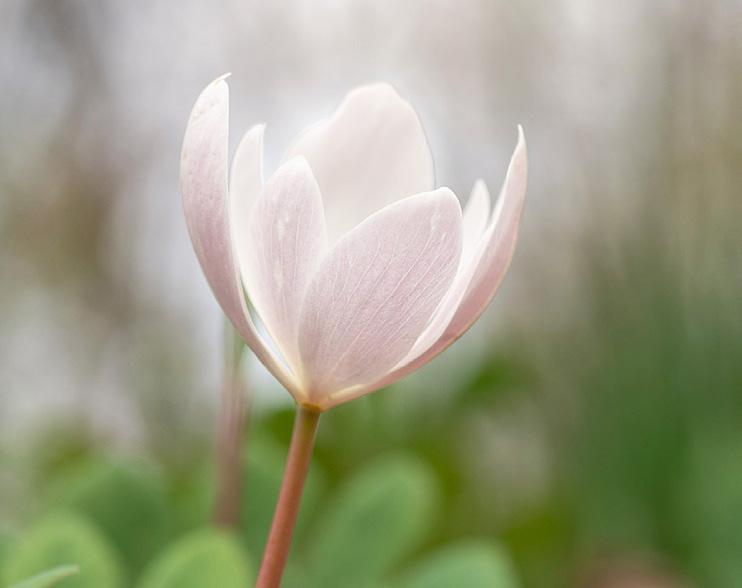
Creative Capture: Photographing Spring Wildflowers (Online)
April 9, 6:30-8:30 p.m.
Discuss creative and stylistic approaches to photographing spring wildflowers, plus helpful techniques. Students will learn how to avoid visual distractions, improve composition with focus selection, overcome depth of field and lighting challenges and utilize post-processing techniques.
Lightroom 101: Library & Basic Editing
April 13, 8:30 a.m.-12:30 p.m.
Lightroom provides a powerful set of tools to help organize, edit and share photos. Learn to create a library, develop module adjustment panels and a module toolbar through lecture and lab exercises.
Lightroom 201
April 20, 8:30 a.m.-12:30 p.m.
Learn about intermediate features of Adobe Lightroom Classic, including the library module, creating composites, shortcuts, color mixing and grading through lecture and lab exercises.
Prerequisite: Lightroom 101
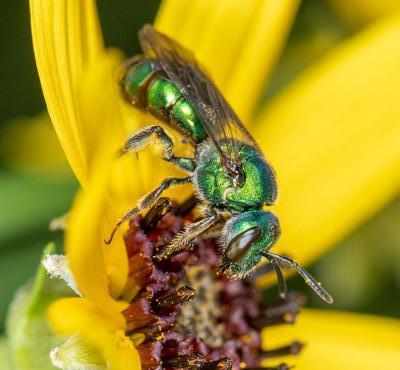
Planting For Pollinators
April 24 or May 18, 10 a.m.-noon
Learn what it takes to create a pollinator garden at home, whether gardening in containers or on acres of land. Discuss the types of plants needed to provide habitat for bees, butterflies, birds and more.
The Power of Balance: Stone Sculpture for Your Garden
April 27, 9-11:30 a.m.
Use shape, weight and friction to create impossible-looking balances using ordinary stones. Learn about design and composition and gain insights on photographing your creations. No experience is necessary.
Lightroom 301
April 27, 8:30 a.m.-12:30 p.m.
This course discusses intermediate features of Lightroom Classic, including masking, graduated and radial filters and the brush tool. Lab exercises will help you understand the concepts taught in class. Prerequisite: Lightroom 101.
ARBORETUM MAGAZINE // APRIL • MAY 2024 | 13 LEARN
Photo by Don Olson
Photos by (Middle) Karen Campbell; (Right) Heather Holm
LEARN
Nature Journaling
May 2, 2-3:30 p.m.
During this mindful writing workshop, participants will experience nature on a guided nature walk and reflect on personal observations through journaling and creative writing. This experience focuses more on observation and writing skills; sketching is optional. Registration fee includes all supplies.

Flower Arranging:
Hand-tied Spring Bouquet
May 9, 5-7 p.m.
Create a spring hand-tied bouquet that showcases movement and channels your own unique style. Discuss general bouquet-making techniques and product choice, building structure, color, movement and depth.
A Wonder-Filled Experience (AWE) Walk
May 16, 2-3:30 p.m.
Experience the science behind the healing power of nature. Each Wonder-Filled Experience features a different seasonal theme based on what’s in bloom and includes a discussion on biophilia to help participants understand how a connection with nature is essential for health and wellbeing. Breathing and grounding exercises will help calm the mind and enhance time spent in a natural environment.
Paint a Portrait of Your Pet
May 16, 1-4 p.m.
Create an acrylic portrait of your pet based on a favorite photograph. Learn proper techniques for color application to create highlights and depth. Experiment with color to create a unique masterpiece.

THE ART OF UP CLOSE: MACRO NATURE PHOTOGRAPHY (ONLINE)
May 22, 6:30-8:30 p.m.
Dive into the technical challenges of closeup and macro nature photography. Participants will discuss how to use lighting to improve photography, freeze motion with flash and shutter speed, techniques for controlling focus depth and the value of focus stacking for increasing depth of field.
Homeschool Day: Pollination Investigation
May 23, 1:15-2:30 p.m.
Student scientists in Grades 2-6 along with an adult investigate different strategies used by plants to attract pollinators as well as their surprising adaptations to draw in the best pollinator for the job. Dissect flowers to investigate their parts and look up close at pollinators’ bodies using microscopes.
Homeschool Day: Ready, Set, Grow!
May 28, 1-2:15 p.m.
Children in Pre K-Grade 1 along with an accompanying adult explore how habitats meet the needs of various plants and animals through a puppet show and an outdoor bird walk. Release ladybugs and get an up-close look at their hard work in the greenhouse.

Shinrin-yoku With Dogs
May 23, 6-7:30 p.m.
Enjoy the tranquility and wellbeing of Shinrinyoku or “forest bathing” with your dog! Shinrinyoku is a Japanese mindfulness practice that focuses on the healing power of nature. Learn how green exercise benefits you and your dog.
| ARBORETUM MAGAZINE // APRIL • MAY 2024 14
Photo by Karen Campbell
Photo by Susan Snegosky
Photo by Anton Shelckovich
DEREK CARWOOD • ADULT EDUCATION MANAGER
As a life-long horticulturist and educator, I couldn’t be more excited to join the team here at the Arboretum where my background and passion converge into a commitment to foster a deeper understanding and connection with the natural world.
My journey in the field began more than 30 years ago with a simple love for cultivating the land while conserving our natural ecosystems. Over many years, that journey has evolved into a career that has taken me across the globe.
Stepping into the role of Adult Education Manager is more than a career move for me, however. It’s a calling to envisage and build a learning environment that engages with all the senses while creating captivating encounters that strengthen a sense of community. Together, we’ll explore a variety of topics, including
horticulture, art, photography, literature and the culinary arts in a way that allows learners to truly engage with the flora and fauna of the Arboretum.
In the coming months, I look forward to collaborating and co-creating a range of classes with faculty, staff, knowledgeable instructors and special guests to elevate the Arboretum’s education programming, making it not only a place to visit, but also a place to actively participate, learn and grow.
Whether you’re interested in improving your mastery in the kitchen, learning how to transform your landscape into a dynamic habitat or simply want to contemplate nature among the trees, my goal is to ensure that members and visitors continue to come to the Arboretum as a source for meaningful and
EDUCATION
memorable educational experiences. I am excited to be a part of this community and I’m looking forward to creating a space where the marvels of nature become a canvas for immersive learning that leads to lasting memories for all.
Visit arb.umn.edu/adult-classes to browse all upcoming adult education classes, including a new Special Access Series featuring horticulture experts from the Arboretum.


ARBORETUM MAGAZINE // APRIL • MAY 2024 | 15
A new Special Access Series co-hosted by Adult Education Manager Derek Carwood and Arboretum horticulture experts invites participants to go behind the scenes and explore subjects such as wetland management and restoration at Green Heron Pond.
Photo by Don Olson
Photo by Lily Smith
Derek Carwood
The Arboretum is now on TikTok!
Follow us @mnarboretum.





Art at the Arboretum
For more information on upcoming art exhibitions and events — including Meet & Greet events — visit arb.umn.edu/art
REEDY GALLERY
Fresh Perspectives | April 2-May 6
Organized during the Great Depression in 1937, the Minnesota Artists Association is the longest-standing artists organization in Minnesota. This exhibition features work from contemporary MAA artists working in all media, including sculpture, painting, drawing, collage and photography. Explore the exhibition during regular visitor hours and attend the artists reception and award ceremony from 6-8 p.m. April 16.
Adam Turman: Did You See That? | May 9-July 14
Experience the bold, bright and colorful work of Minnesota artist, muralist and print maker Adam Turman as he explores the wonders of nature — and how we perceive them — at the Minnesota Landscape Arboretum. The original paintings in this exhibition are made using acrylic and spray paint on large cradled panels repurposed from the theater industry, and might catch you off guard with playful-yet-subtle references to iconic Minnesota motifs, local folklore and even your own childhood nostalgia. Look closely: Did you see that?
CAFE GALLERY
Nature Speaks | April 18 - May 27
Artist Ruth Jensen McGrath’s oil paintings are inspired by a love of her surroundings. Seeking the natural beauty of Minnesota’s many waterways, parks, farmland and wooded acres, Jensen McGrath finds inspiration from the vistas near her home that provide poetic views of the countryside throughout the seasons. When you’re surrounded by gardens and wildlife, inspiration is never far away.
ANDERSEN HORTICULTURAL LIBRARY
50 in 50: Celebrating 50 Years of Wonder | Through Dec. 31
Explore the hidden gems and curiosities in the Andersen Horticultural Library’s extensive collection of rare books and artifacts. Discover something new from these captivating pieces of nature’s history at the largest horticultural library in the Upper Midwest.
SKYWAY GALLERY
Portraits of the Plots: Biodiversity at Cedar Creek Ecosystem Science Reserve | Through June 21
Don Luce presents a series of paintings that capture the character of the individual test plots that make up Cedar Creek’s Big Biodiversity (Big Bio) experiment. The paintings were made in a process that mimicked the growth of the plots, starting from a sand-colored base, with details of the plants layered on top.

Artist Adam Turman is known for his bold style and iconic depictions of Minnesota. The exhibition “Did You See That?” opens May 9 with an artist Meet & Greet from 1-3 p.m. May 19.
3675 Arboretum Drive Chaska, Minnesota 55318-9613
Photo by Erik Fleischhacker













 MATT SCHUTH • NATURALIST
MATT SCHUTH • NATURALIST


 JEFF ISEMINGER • CONTRIBUTING WRITER
JEFF ISEMINGER • CONTRIBUTING WRITER






















